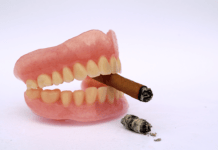As a society and a profession, we are facing an extremely stressful time. The COVID-19 shelter-in-place restrictions are not only a public health emergency, but it has quickly become an emotional and mental health crisis. Stress-related depression and anxiety are rising while families are trapped at home with no or little income, homeschooling children, and under a constant barrage of news-evoked fear.
Many dental professionals have returned to a potentially unsafe environment in their offices and/or teetering on the edge of retirement.
Some peoples’ perspectives are glass-half-full, while others are fear-based and glum. What causes people to react differently to a similar situation? Part of this outcome could be each personal experience. Was there job loss? Is there an abusive or volatile family situation? Are there existing underlying mental health issues? Is the office providing proper PPE?
All of these situations can be contributors to each person’s outlook. As a counselor, I often talk and write about the things we can change versus the things we cannot change. The current condition leaves most of us with more things we cannot control.
Most people have set coping mechanisms, whether healthy or unhealthy, that are utilized during stressful situations and were learned early in life. If one has not taken the time and effort to dig deep into their psyche and understand coping behaviors, there is a good chance these behaviors run on autopilot.
An individual may not even realize that a coping habit of “stuffing” or avoiding feelings is unhealthy because it feels natural. Eventually, the feelings boil over into an outburst or surface as a medical problem.
Emotion Regulation
Although there is no concrete answer, a few simple “emotion regulation” strategies may, at the very least, offer momentary release from the madness. Emotion regulation is defined as shaping how one experiences or expresses emotions as they arise. Essentially, it is the art of controlling emotions before emotions control you.
Emotion regulation strategies consist of five mutually exclusive goals when something goes awry, which can result in momentary to long-term relief from the stressful event.
Situation Selection
Situation selection takes the most planning of any emotion regulation strategy. It is preplanning to avoid a situation that evokes stress, anxiety, or fear.1
For example, one may choose to visit an office prior to a temp assignment in order to confirm that the necessary PPE is available. Solidifying a safe working environment before the workday begins can greatly reduce stress and fear of the unknown.
Situation Modification
Situation modification refers to modifying external circumstances to reduce the emotional impact.1 An example may be that, instead of arguing with a child during the math session in this newfound homeschooling way of life, one might create a game or contest to facilitate the lesson plan.
A simpler modification example is tidying up a messy office around the desk just to give off the perception of a clean office and home on today’s Zoom meeting.
Attentional Deployment
Attentional deployment is one of the most primitive emotional regulatory processes that begins at a very early age and continues to the grave.1 When changing the external environment is not possible, the internal direction of attention can be altered through one of three tactics: distraction, concentration, and rumination.
Attentional deployment may be completely moving attention towards something different, selectively focusing on one quality of a situation or concentrating on different aspects of a situation.2
A use of attentional deployment may be the annoyance of a neighbor’s backyard BBQ competing for music. Instead of being annoyed or increasing the volume to win the auditory space, turn off your speaker and enjoy the neighbor’s melodic selection. Perhaps a new artist or style of music will be a positive outcome.
Cognitive Change
Cognitive change or reappraisal is changing the way one thinks about a situation. It can be used to increase or decrease negative and positive emotions. Cognitive change can be applied to internal and external situations.1
An example of internal reappraisal is, “Even though I did not reach my goal of working out every day this week, I did the best I could, and I am good with that.”
An external change may come in the form of redirecting feelings in an annoying circumstance. Instead of silently cursing the patient who appears overcautious and suspicious of your infection control procedures, try thinking about how the patient could be driven by fear. Perhaps their perspective is based on misinformation and not a personal attack on your professionalism.
Many people who suffer from anxiety are triggered in the dental office, especially in a situation like a pandemic. Considering the patient’s viewpoint changes judgment to curiosity and softens the harsh thoughts and emotions towards others.
Response Modulation
The regulatory process of response modulation comes late in the regulation game when other reaction tendencies have been deployed. Commonly healthy modulation responses are deep breathing exercises, taking a walk as the prefrontal cortex calms, or other relaxation techniques such as meditation.
Modulation can also be expressed in unhealthy forms such as alcohol, food, and drug use to numb unwanted feelings.1 A heated argument between partners that seems impossible to resolve may need both parties to walk away and take deep breaths. This helps regain a feeling of being grounded and disengages from the negative emotional center of the brain, the amygdala.
Different emotion regulation processes may result in different outcomes for short- and long-term emotional results. Research shows that reappraisers tend to enjoy decreased negative emotions, increased positive emotions, and less excitement in the amygdala. In contrast, people who completely suppress emotion through unhealthy practices such as numbing with alcohol have increased negative and decreased positive emotions.1
In Closing
During times such as a pandemic or national unrest, it is important to have physical and mental self-care strategies on hand to ease worry and fear. It begins with the personal assessment of behavior and thought patterns and employing the most reasonable regulatory process. Dig deep to discover triggers and how emotion regulation may assist in comforting or relieving strain.
Now Listen to the Today’s RDH Dental Hygiene Podcast Below:
References
- Gross, J. J. (Ed.). (2015). Handbook of Emotion Regulation (2nd ed.). The Guilford Press.
- Wadlinger, H.A., Isaacowitz, D.M. Fixing Our Focus: Training Attention to Regulate Emotion. Pers Soc Psychol Rev. 2011; 15(1): 75-102. https://pmc.ncbi.nlm.nih.gov/articles/PMC2970710/











